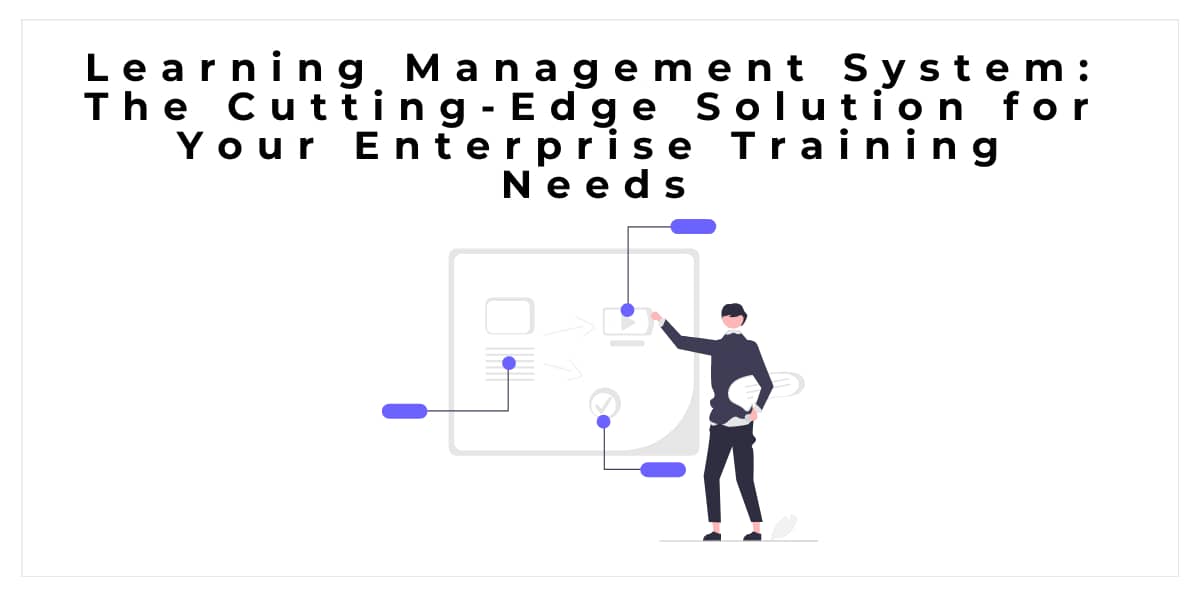Training employees is essential for the growth and success of any organization. However, traditional training techniques such as classroom sessions, workshops, and printed materials can be time-consuming and expensive. As a result, many enterprises are turning to Learning Management Systems as a cutting-edge solution for their training needs.
This article will explore the advantages of using an enterprise LMS for training.
What is a Learning Management System?
This software enables organizations to manage and deliver employees' online training and education programs. It provides a central location for training materials, including courses, quizzes, and assessments, that workers can access from anywhere, anytime, using a computer or mobile device. The LMS also allows managers to track employee progress and performance, monitor compliance, and generate reports.
Benefits
Cost-Effective
One of the primary benefits of an LMS is that it is a cost-effective solution for enterprise training. With an LMS, organizations can eliminate the need for printed materials, classroom sessions, and travel expenses associated with traditional training methods. Instead, training materials can be created and accessed online, reducing costs and increasing efficiency.
Flexibility and Convenience
Another significant benefit is flexibility and convenience for the organization and the employee. Employees can access training materials at their own pace, from anywhere with an internet connection, and on any device. In other words, workers can complete training during non-working hours or while traveling, which is particularly useful for remote or geographically dispersed teams. Managers can also assign training modules to specific employees, departments, or teams, making tracking progress easier and ensuring compliance. To further enhance this flexibility, websites such as https://cloudassess.com/lms/ often provide mobile-first, offline-capable learning solutions. This allows employees to continue their training even in areas with limited connectivity, ensuring uninterrupted learning experiences.
Customizable
An LMS is highly customizable, allowing organizations to tailor training materials to their needs. The LMS can be branded with the organization's logo and colors, and the content can be customized to reflect the organization's unique processes, procedures, and culture. This ensures that training materials are relevant and engaging for employees, leading to higher retention rates and better performance.
Improved Employee Engagement and Retention
An LMS can improve employee engagement and retention by providing interactive and engaging training materials. The software can include multimedia elements such as videos, animations, and simulations, making training more enjoyable and memorable. The LMS can also include gamification elements such as quizzes and leaderboards, motivating employees to complete training modules and compete with their colleagues.
Enhanced Tracking and Reporting
An LMS provides enhanced tracking and reporting capabilities, allowing managers to monitor employee progress and performance in real time. Conversely, managers can see which employees have completed training modules that are behind schedule and need additional support. The LMS can also generate reports on training completion rates, assessment scores, and compliance status, making it easier to demonstrate regulatory compliance to auditors and regulators. Check out here to learn more ways to enhance your employee training experience.
Scalability
An LMS software is also highly scalable, making it suitable for organizations of any size. It can accommodate many users, making it ideal for enterprises with thousands of employees. Additionally, the LMS can be easily scaled up or down as the organization's training needs change.
Conclusion
A Learning Management System is a cutting-edge solution for enterprise training needs. An enterprise LMS provides a cost-effective, flexible, customizable, and scalable platform for managing and delivering online training materials to employees. It can improve employee engagement and retention, enhance tracking and reporting, and ensure compliance with regulatory requirements. With these benefits, it's no wonder that more and more organizations are turning to LMSs as a critical tool for their training and development programs.








